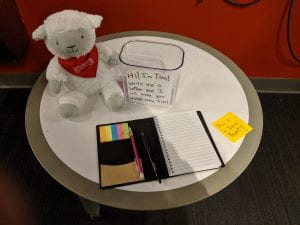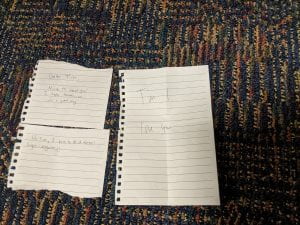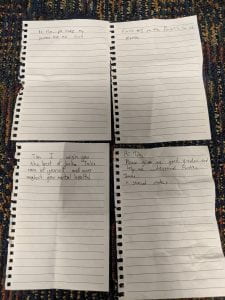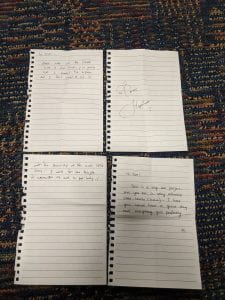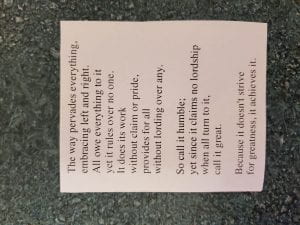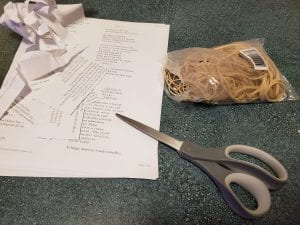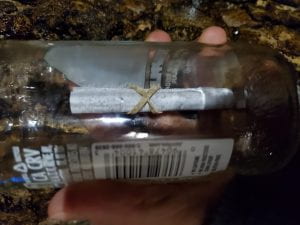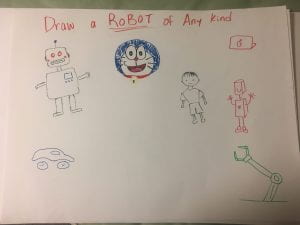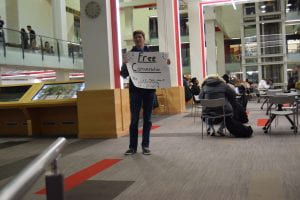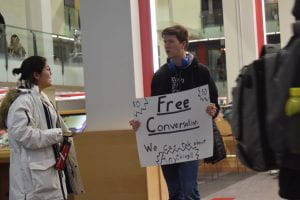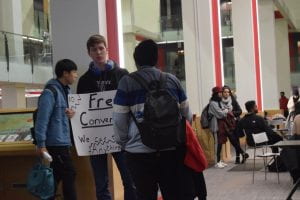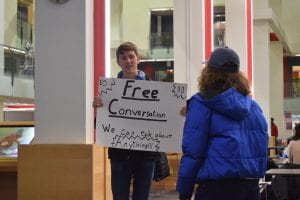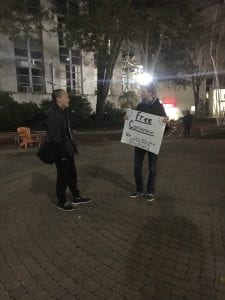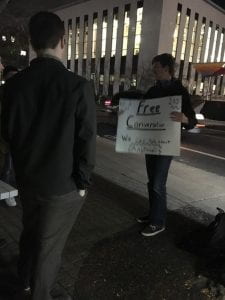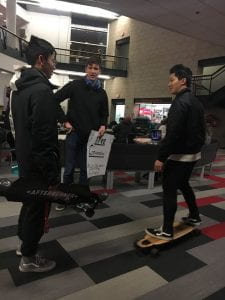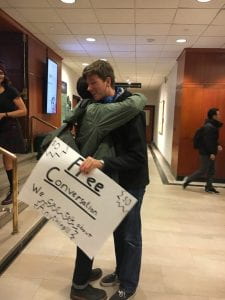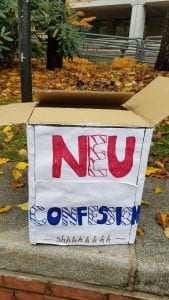For my intervention, I choose to attempt to cover every whiteboard and chalkboard in Ryder Hall with drawings and words. As rules, we wouldn’t go into room that had other people in them, and we wouldn’t erase anything that was already on the board. I allowed anything to be drawn or written on the boards. Starting on a Sunday at 9:45, we started drawing as a big group covering as much of each board as we could. Team members would come in and out as they could, but in total we had around 15 people contributing to the project. Some rooms still had people studying in them, so we skipped those. We eventually filled all of the rooms on the first floor, excluding the ones with people in them, however when we began working on the second floor, the janitorial staff began erasing the work on the first floor. Because the intervention was no longer intervening the process we intended, we decided to stop the intervention early. Each member of the team drew independently and without specific instruction, though there were often collaborations during this. I thought this was important to the intervention to ensure that the message of creativity juxtapose with learning was at the forefront of the message.
My initial intention with my project was to demonstrate how creative fields such as art, music, theatre, and dance are often seen as a distraction to supposedly more important and relevant fields like science and engineering. I was inspired by the absurdism of the Dada art movement and how they used exaggerated absurdity to question art itself. I wanted to use artistic expression in an exaggerated and absurd way to physically intervene in the process of teaching. I was also inspired by some of Banksy’s work wherein he uses the actual process of creating the artwork as part of its message. For instance some of Banksy’s graffiti work plays with the idea of not being able to stop his illegal graffiti as part of his message. One consideration we made while performing the intervention was to write in different forms the words: “Do not erase.” These words gave a sense of life to much of the absurd artwork, as if the artwork was speaking to the viewer. I found this quite similar to the repeating usage of “Dada” in the Dada artworks, whereby it’s repetition almost causes it to lose its inherent meaning. Overall the intervention was able to take inspiration from different intervention artists while still being able to use its unique medium to convey a unique message.
Intervention photos: https://drive.google.com/open?id=1v1vcH1q1BEgm8c5fNSLAC0_iBGCB4hZw

